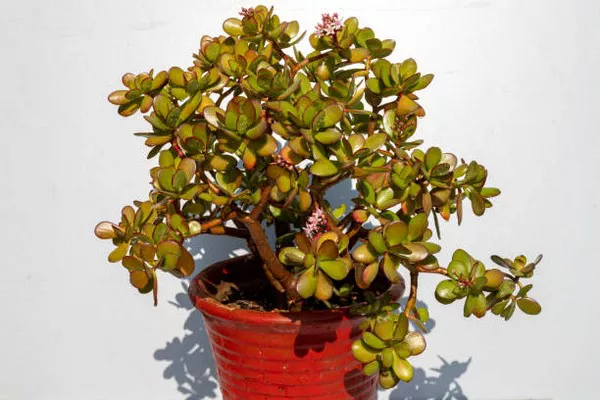Jade plants (Crassula ovata), commonly known as the money plant or lucky plant, have been cherished for centuries for their resilience, auspicious symbolism, and distinctive succulent foliage. Beyond their cultural significance, many enthusiasts are captivated by the intriguing question: How big can jade plants get? In this exploration, we delve into the fascinating world of jade plant growth, shedding light on the factors that influence their size and offering insights into cultivating these timeless indoor beauties.
Natural Habitat and Origin:
Before delving into the growth potential of jade plants, it’s essential to understand their natural habitat and origin. Indigenous to South Africa, jade plants thrive in arid regions characterized by well-draining soil and plenty of sunlight. In their native environment, these succulents can reach impressive heights, with some specimens growing up to 10 feet tall. This inherent ability to reach such heights in the wild hints at the remarkable growth potential that jade plants possess.
Factors Influencing Jade Plant Size:
Several factors play a crucial role in determining how big a jade plant can grow. Understanding these factors empowers enthusiasts to create optimal conditions for their plants to flourish:
Container Size: The size of the pot or container in which a jade plant is housed significantly impacts its growth. Restrictive containers can limit the plant’s size, leading to stunted growth. On the other hand, providing a spacious and well-draining container allows the jade plant’s roots to expand, promoting overall growth.
Soil Quality: Jade plants thrive in well-draining soil that mimics the conditions of their native habitat. A mix of succulent or cactus soil, combined with perlite or sand, facilitates proper drainage, preventing waterlogged roots and promoting healthy growth.
Light Exposure: Adequate sunlight is paramount for the optimal growth of jade plants. These succulents prefer bright, indirect light and can tolerate some direct sunlight. Placing them near a south or west-facing window ensures they receive sufficient light for robust growth. However, it’s crucial to acclimate them gradually to prevent sunburn.
Watering Practices: Jade plants are adapted to arid conditions and are highly drought-tolerant. Overwatering can lead to root rot and hinder growth. Allowing the soil to dry out between watering sessions and adjusting the frequency based on environmental conditions is key to promoting a healthy and sizable jade plant.
Temperature and Humidity: Jade plants thrive in average room temperatures and are well-suited to the indoor environment. They can tolerate occasional fluctuations but should be protected from extreme temperatures. Additionally, low humidity levels are preferable, making them well-suited to indoor settings.
Cultivating Large Jade Plants:
Enthusiasts aspiring to cultivate large jade plants can follow these guidelines to encourage optimal growth:
Choose the Right Container: Select a pot or container that provides ample space for the jade plant’s roots to spread. Ensure it has drainage holes to prevent waterlogging.
Use Well-Draining Soil: Create a well-balanced soil mix by combining succulent or cactus soil with perlite or sand. This promotes proper drainage and prevents water retention.
Optimize Light Conditions: Place the jade plant in a location with bright, indirect light. If possible, expose it to some direct sunlight, but be mindful of potential sunburn, especially if the plant is not acclimated.
Water Wisely: Allow the soil to dry out between watering sessions. Adjust the frequency based on factors such as temperature, humidity, and the season. Err on the side of underwatering rather than overwatering.
Pruning for Shape and Size: Regular pruning can help shape the jade plant and control its size. Trim back leggy or elongated stems to encourage bushier growth. Pruning should be done in spring or early summer when the plant is actively growing.
Provide Adequate Space: If cultivating jade plants in a group, ensure they have sufficient space between them to avoid overcrowding. This allows each plant to receive adequate light and air circulation.
See Also A Comprehensive Guide to Propagating Jade Plants
Conclusion:
The growth potential of jade plants is a captivating aspect that adds to their allure as indoor companions. By understanding the factors influencing their size and implementing proper cultivation practices, enthusiasts can foster the development of impressive and majestic jade plants. Whether adorning homes, offices, or gardens, these resilient succulents continue to captivate with their timeless beauty and symbolic significance.


